White hydrogen – Setting Up a Recycled Polyester Manufacturing Plant: Project Report 2023 18-11-2023
White hydrogen
SK Geo Centric Breaks Ground on Ulsan Recycling Facility
The $1.4 billion facility is expected to be capable of processing 320,000 metric tons of waste plastic per year.
SK Geo Centric held a groundbreaking ceremony on Wednesday, Nov. 15, for the Ulsan Advanced Recycling Cluster (ARC), a waste recycling complex.
The site represents a total projected investment of KRW 1.8 trillion ($1.4 billion USD) and will cover 60 acres. The Ulsan ARC is scheduled to be completed by the end of 2025.
SK Geo Centric is partnering with Plastic Energy, Purecycle Technologies and Loop Industries to apply three recycling technologies in one site: pyrolysis, polypropylene (PP) extraction and depolymerization. White hydrogen
“The ability to create a closed-loop recycling system for apparel companies using the Infinite Loop technology will play a significant role in our Asian JV with SKGC as we work to reinvent the supply chain for textile manufacturing in Asia,” says Daniel Solomita, Loop Industries CEO.
When the facility is operational, it is expected to have an annual capacity to reprocess 320,000 metric tons (over 700 million lbs) of plastic waste.
Operating at full capacity, this will enable processing 9% of waste plastic incinerated or buried each year in South Korea and 60% of the nation’s annual consumption of PET water bottles and plastic cups.
SK Geo Centric’s Ulsan ARC project is designed to serve as a model for future projects, with discussions already underway for building additional plants in France, Belgium and China. White hydrogen
The Ulsan site will be able to create raw plastic materials from a wide range of discarded plastics, such as takeout containers, bottles, automotive parts and certain plastic-based textiles.
It will be able to turn some plastics, such as vinyl and other composite plastics, into chemical materials that can be used as a substitute for crude oil.
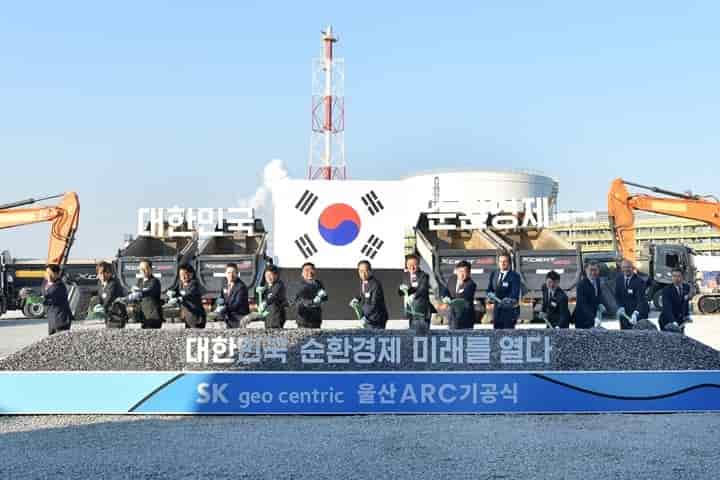
Carbios’ PET Biorecycling Plant, Longlaville, France
Carbios is developing the world’s first PET biorecycling plant in Longlaville, France.
Carbios, a biotech company based in France, is developing a polyethylene terephthalate (PET) biorecycling plant in Longlaville, France. It is expected to be the first of its kind in the world.
The new facility is being developed in a joint venture (JV) with Indorama Ventures, a producer of recycled PET for beverage bottles. The JV is expected to invest €230m ($242.9m) in the facility. White hydrogen
The construction is scheduled to begin by the end of 2023, with commissioning targeted for 2025. The project is expected to create approximately 150 direct and indirect full-time jobs.
The new facility is part of Indorama’s Vision 2030, which is aimed at achieving a recycling capacity of 50 billion PET bottles a year by 2025 and 100 billion bottles a year by 2030. Indorama plans to expand the technology to other PET plants based on the performance of the new facility.
Carbios’ PET biorecycling plant location
The PET biorecycling plant will be built on a 13.7ha site within Indorama’s PET production site located in Longlaville, Meurthe-et-Moselle, France. The site has space to double its capacity in the future. White hydrogen
The plant’s location near the borders of Belgium, Germany and Luxembourg provides access to nearby waste supply.
Development details
Carbios and Indorama announced plans to develop the facility in February 2022. The two companies signed a non-binding memorandum of understanding (MoU) in June 2023 for the project.
Indorama will ensure 100% output repolymerisation and both partners will be responsible for securing feedstock supply under the MoU.
Carbios filed for the permitting process of the new plant in December 2022. The environmental operating permit was issued in September 2023, while the building permits were granted in October 2023.
Carbios’ PET biorecycling plant details
Carbios’ PET biorecycling plant will provide an industrial-scale enzymatic recycling solution for PET waste. White hydrogen
The plant will have a processing capacity of 50,000t of post-consumer PET waste a year, including non-recyclable mechanical waste equivalent to two billion coloured PET bottles or 2.5 billion PET food trays.
The initial supply for the plant will be sourced by a consortium comprising Carbios, Wellman, a subsidiary of Indorama Ventures and Valorplast, as part of a tender issued by CITEO. Valorplast is a recycling services provider, while CITEO is a not-for-profit organisation focused on reducing the environmental impact of packaging.
The consortium will handle 30% of the tonnage of multilayer food trays proposed by CITEO, a portion of which will be supplied to the new plant in 2025.
Carbios’ enzymatic recycling process details White hydrogen
Carbios’ C-ZYME™ is a first-of-its-kind enzyme-based biological process that converts PET plastic and textile waste into its core monomers, which are then purified to enable repolymerisation into a PET of similar quality to that of one manufactured from virgin material.
The solvent-free process overcomes the limits of existing thermomechanical recycling processes that can only recycle clear plastic in a closed loop with some loss in quality. The technology enables all types of PET waste to be recycled, allowing for the manufacture of 100% recycled and infinitely recyclable PET products. White hydrogen
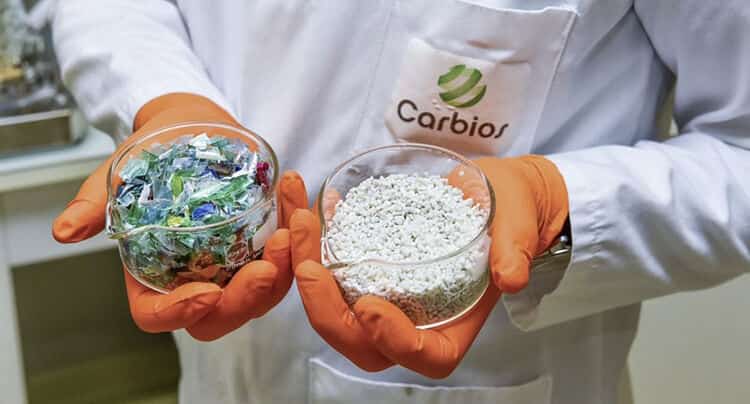
The Power and Traceable Proof Behind Lenzing’s Fiber Brands
Now more than ever, companies need to know where their fibers come from. Being able to pinpoint a material’s origin not only helps to provide more specific sustainability progress, benchmarking and reporting, but it also enables brands to make supported, substantiated claims about their products’ impact.
However, the apparel and textile industries’ long and complex supply chains make it challenging to have full confidence in tracing a material origin and the authenticity of the claims made about specific products. White hydrogen
Most companies can only trace back to Tier 2, or their fabric supplier, leaving opportunities for counterfeit risks. In an effort to establish better traceability practices, wood-based fiber manufacturer the Lenzing Group created traceability and transparency systems and solutions to protect its fiber brands, TENCEL™ and LENZING™ ECOVERO™.
The companies that source Lenzing materials know they are getting the verified, sustainable lyocell and modal, compared to generic viscose fi“Respect and protection of trademarks are our core values, and we strongly believe that innovation is the lifeline for ongoing growth and development of the fashion and home textile value chain,” said Harold Weghorst, vice president of global marketing and branding at Lenzing.
“For years, we have been taking proactive steps to enforce the TENCEL™ and LENZING™ ECOVERO™ trademarks to ensure that the rights of our partners and consumers are protected, and that only products made of authentic branded fibers bear the trademarks.”
In 2018, Lenzing launched its Lenzing E-Branding Service for its supply chain partners. In this system, the manufacturer can have their fabric tested to ensure that it is authentic, meaning that they can accurately claim that their materials are made with Lenzing fibers. Once the test confirms the product contains Lenzing fibers, the producer receives a certificate which can be carried through to the brand buyer, enabling the consumer-facing retailer to apply for product licensing as well as branding materials from Lenzing.
Among the marketing materials available for e-commerce stores are free swing tickets and a Digital Hangtag tool. Even in today’s digital retail environment, hangtags still provide an opportunity for brands to communicate benefits to better market products.
A 2020 consumer survey conducted for Lenzing found that 88 percent of clothing shoppers and 86 percent of bedding buyers read hangtags. White hydrogen
Lenzing E-Branding Service also includes a helpdesk that gives licensees direct access to experts who can assist them in the certification process.
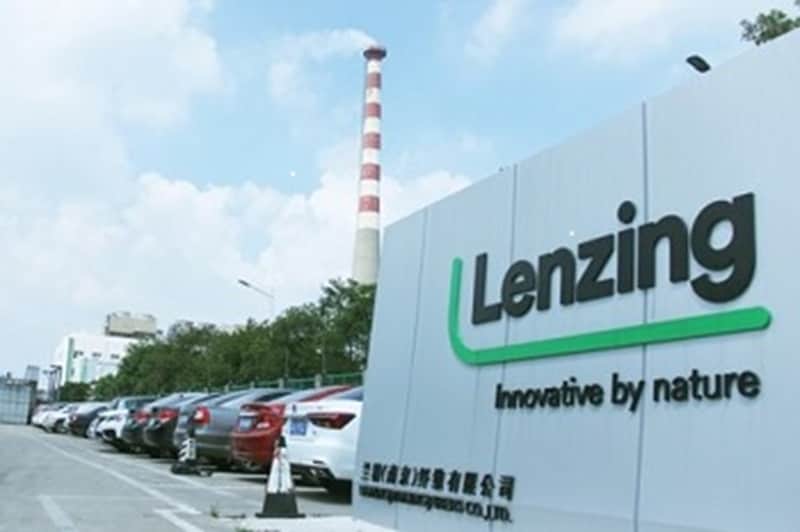
Setting Up a Recycled Polyester Manufacturing Plant: Project Report 2023
The report “Recycled Polyester Manufacturing Plant Project Report 2023: Industry Trends, Plant Setup, Machinery, Raw Materials, Investment Opportunities, Cost and Revenue” provides a comprehensive guide for establishing a recycled polyester manufacturing plant. The report covers various aspects, ranging from a broad market overview to intricate details like unit operations, raw material and utility requirements, infrastructure necessities, machinery requirements, manpower needs, packaging and transportation requirements, and more.
In addition to the operational aspects, the report also provides in-depth insights into recycled polyester manufacturing process, project economics, encompassing vital aspects such as capital investments, project funding, operating expenses, income and expenditure projections, fixed and variable costs, direct and indirect expenses, expected ROI, net present value (NPV), profit and loss account, and thorough financial analysis, among other crucial metrics. With this comprehensive roadmap, entrepreneurs and stakeholders can make informed decisions and venture into a successful recycled polyester manufacturing unit. White hydrogen
Recycled polyester, a sustainable textile innovation, has emerged as a beacon of hope in the fashion and textile industry’s quest for eco-friendliness. This revolutionary material is derived from post-consumer plastic bottles, diverting them from landfills and oceans, and transforming them into a versatile, eco-conscious fabric. With its reduced environmental footprint, recycled polyester addresses the growing concerns of resource depletion and plastic pollution. Its adoption aligns with the global shift towards sustainable fashion, offering a guilt-free alternative to traditional polyester.
This textile has emerged as a sustainable and eco-friendly alternative to traditional polyester, driven by several market drivers and trends. One of the key drivers is the growing global awareness of environmental issues and the need to reduce plastic waste. Recycled polyester addresses this concern by repurposing PET plastic bottles and textile waste into new polyester fibers, reducing the reliance on virgin petroleum-based polyester. Consumer demand for sustainable as well as ethically produced clothing and textiles has also fueled the growth of this textile. White hydrogen
Brands and manufacturers are responding to this demand by incorporating recycled polyester into their product lines. Additionally, government regulations and policies promoting sustainable practices and circular economy principles have further propelled the adoption of this textile. Innovations in recycling technologies and processes have made it more cost-effective to produce high-quality recycled polyester, making it competitive with virgin polyester in terms of price and performance.
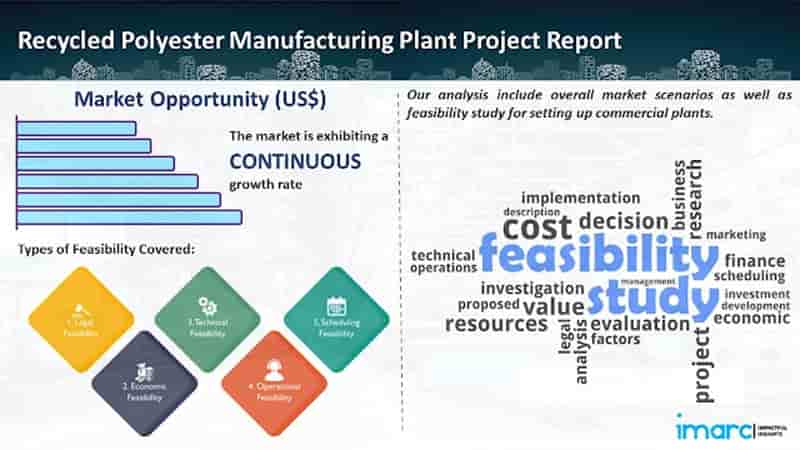
In a groundbreaking announcement, scientists worldwide have unveiled the remarkable revelation of an exceptionally abundant reservoir of white hydrogen
This discovery, estimated to encompass a staggering 6 to 250 million metric tons, emerges as a transformative catalyst for the evolution of sustainable energy solutions.
White hydrogen, distinguished for its minimal environmental footprint by yielding only water upon combustion, has long been a coveted resource in sectors like aviation and steel production. The prevailing methods for hydrogen production presently heavily lean on fossil fuels, making this discovery a pivotal stride towards establishing a more environmentally conscious economy. White hydrogen
The magnitude of interest sparked by this revelation stems from its sheer abundance and the untapped potential it presents as a pristine energy source. This finding not only challenges pre-existing hypotheses but also charts a course towards unexplored frontiers in utilizing hydrogen as an expansive and eco-friendly energy reservoir.
Experts are quick to underscore the profound positive ramifications this discovery could have in the larger context of transitioning towards sustainable energy sources. It serves as a paradigm shift, upending established notions regarding hydrogen supply and laying the groundwork for a future characterized by increased cleanliness and sustainability.
The implications of this white hydrogen deposit extend far beyond its immediate environmental benefits. White hydrogen
The prospect of a more extensive and accessible source challenges industries to reimagine their energy landscapes, offering a compelling alternative to conventional methods reliant on fossil fuels. As the demand for cleaner energy intensifies, this discovery becomes a linchpin in fostering a global shift towards practices that are not only economically viable but also ecologically responsible.
Moreover, the newfound abundance of white hydrogen provides a strategic advantage in diversifying energy portfolios. Its versatility and eco-friendly attributes position it as a frontrunner in reshaping the energy matrix, potentially reducing our dependence on finite and environmentally taxing resources. White hydrogen
In conclusion, the revelation of this unprecedented white hydrogen deposit represents a watershed moment in the pursuit of sustainable energy. Its vast potential, coupled with its minimal environmental impact, challenges the status quo and propels us towards a future where hydrogen plays a central role in a cleaner and more sustainable global energy landscape.

Stora Enso to produce 1.2 million tonnes of packaging materials at Oulu mill beginning in 2025
With its new production line in the Oulu Mill in northern Finland, Stora Enso will increase its capacity and produce 1.2 million tonnes of sustainable packaging materials in one site starting from 2025.
“This is an ongoing journey, and a shift in mindset towards packaging sustainability is now taking place across all regions. The regulation is most advanced in Europe, but the trend can be seen everywhere. Our winning combination at Stora Enso is the fact that we can offer our customers a large portfolio of premium-quality materials while supporting their efforts in moving towards more sustainable offering,” Tomi Nurminen, Stora Enso’s Head of Product Line, CKB, says. White hydrogen
Stora Enso’s expanded capacity in Oulu empowers customers to embrace greater sustainability in their choices for food, beverage and personal care packaging. The new high-quality and material-efficient packaging boards enable the use of renewable materials and encourages circular design principles, including bio-based, recyclable, and low carbon options.
In the long term, the use rate, availability, and cost of sustainable materials will evolve as more people prioritise them. There will be more alternatives available, and materials will be prioritised also by different mechanisms such as the producer responsibility costs.
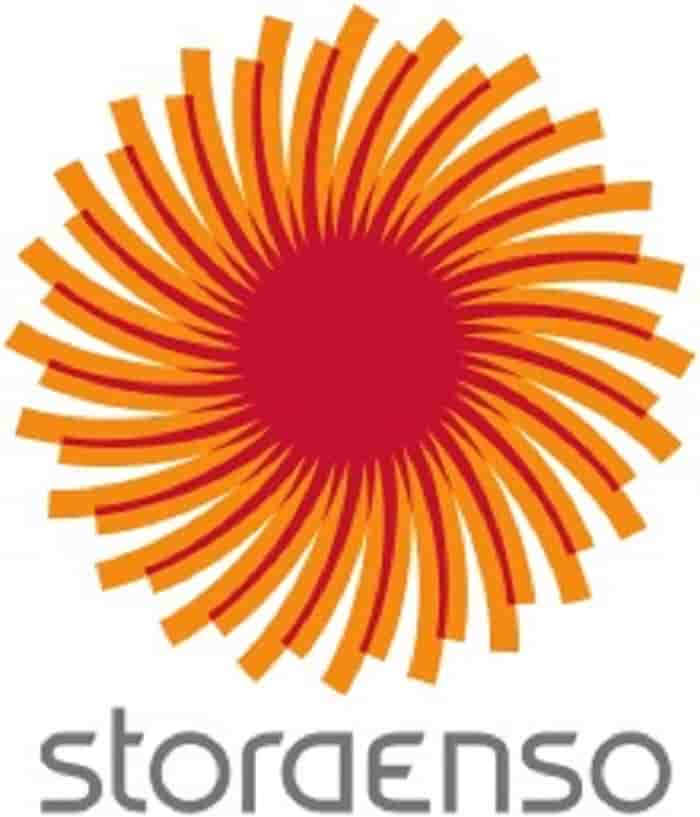
Opinion: Establishing a New Plastics Value Equation
The world clearly needs a new plastics value equation – one where the utility of plastics is maintained, CO2 emissions are greatly reduced and plastic pollution is prevented.
There can be no doubt that plastics-producing and plastics-using corporations are largely responsible for significantly reducing the environmental impact of these materials. However, companies’ central role in this pursuit cannot be performed in isolation.
Outlining the circular plastics system
There is growing recognition that the solution is a circular economy. The principal goals are to decouple plastic production from its harmful reliance on fossil feedstock and to keep high-quality plastics in circulation. White hydrogen
Material circularity holds the greatest potential for carbon emissions abatement. As outlined in the recently launched Plastics Transition Roadmap, a 28% reduction in emissions generated by the European plastics industry is achievable by 2030, setting us on the path to net-zero by 2050*. All up- and down-stream levers need to be engaged including new reuse business models, design of lighter materials, design for recycling, as well as mechanical and chemical recycling. Further emission reductions can be realized by increased use of renewable sources of power, green hydrogen, carbon capture and alternative feedstocks such as biowaste in the production of plastics materials.
While all of these avenues must be pursued intensively, one of the biggest opportunities to reduce emissions comes from increasing recycling levels. White hydrogen
Intelligent systems that efficiently sort and then recycle multiple waste streams, including those that are difficult to reprocess, are emerging. This technology is progressing quickly, aided by the adoption of AI, which is set to improve waste sorting and processing efficiency. Moreover, concepts to “decentralise” recycling by setting up small-scale hubs near waste-generating sites are gaining traction.
However, note that there is no “silver bullet” to deliver the new plastics value equation. A range of complementary solutions that operate fluidly at scale is required. Establishing such physical and systemic infrastructure relies on contributions by a variety of stakeholders.
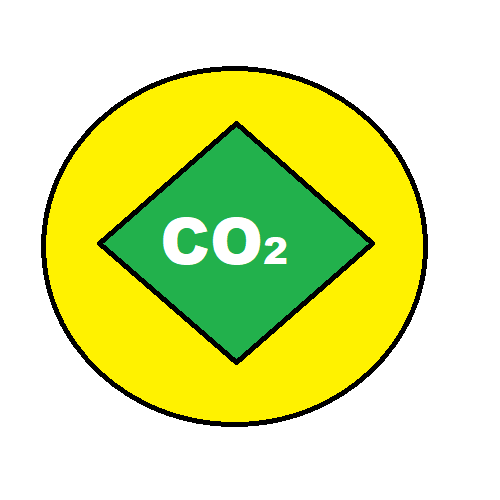
White hydrogen
